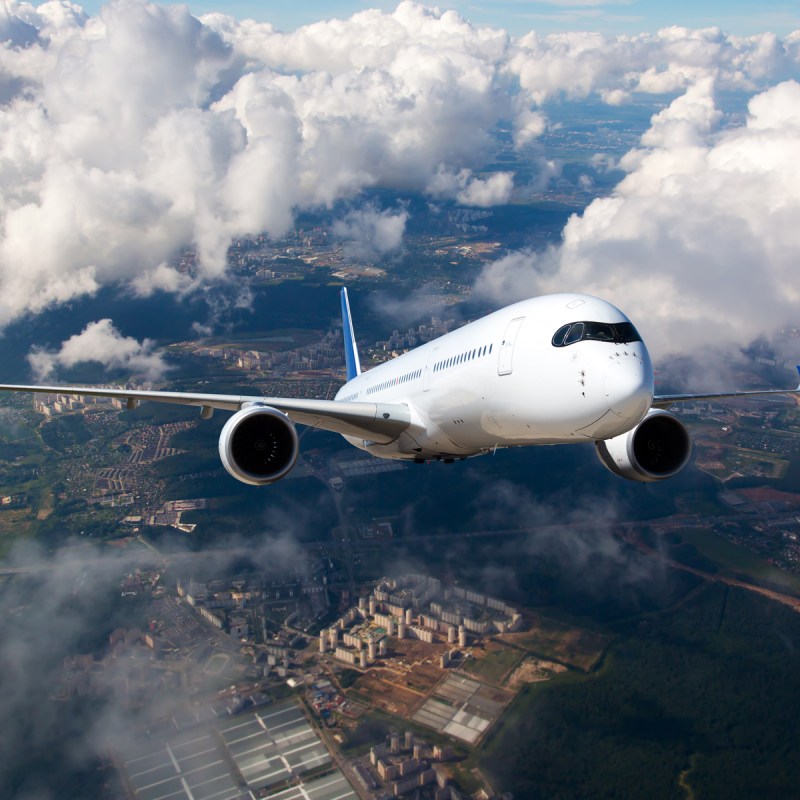
One of the questions I get asked a lot is if I ever get scared on an airplane. As a flight attendant with over 25 years of flying experience, the answer is “sometimes.” I do have some moments of anxiousness on planes, but it is usually when I am a passenger and not working. Flight attendants are trained to be aware of all kinds of things going on with the airplane during different stages of flight. We are also trained to take control mentally and physically when an emergency or unusual situation occurs. This keeps us focused and confident that we can handle anything unusual that occurs onboard. If you are a nervous flyer, these strategies can help you have a more relaxed and smooth flight as well.
Videos by TravelAwaits

1. Familiarize Yourself With Your Environment
This is a solid strategy for feeling in control whether you are in a hotel, in an unfamiliar city, or on an airplane. We know you have heard it a zillion times: Pay attention to the safety demo and look at the safety briefing card. But this really is a good way to establish that feeling of control you need to be comfortable on an airplane. Knowing you have an exit plan should you need it relays a sense of control to your central nervous system. Look at a seat map online prior to travel. Envision where you will be and, yes, please do find your nearest exits and know how to open them. I choose seats near an exit. I go over the steps I would take to get myself and others out should the need arise. I always carry a small smoke hood (“a portable [and easily packable!] smoke escape and evacuation mask for home, work, and travel”) in my bag. It is a great thing to have on an airplane or when you stay in a hotel. Knowing that you will be in control in an emergency is a powerful way to ease anxiousness.
2. Create A Routine
Anyone who has experienced anxiousness will affirm that having a familiar routine is a key tool for coping with any stressful situation. According to Catherine Serio, Ph.D., a licensed psychologist, “the human brain is more at ease in familiar situations. Familiarity sends a signal that ‘we know what’s going to happen’ and don’t need to be in a state of alert. In contrast, the brain sends signals to be alert and anxious when a situation feels unknown.”
Establishing a routine when you fly allows your brain to tap into that sense of familiarity. You can create a routine by identifying things that are predictable and that you have control of. Traveling with familiar objects — neck pillow, scarf, stuffed animal, whatever feels and smells normal to you — can help establish this feeling of routine. I like to listen to an established playlist. I know what song comes next, and that helps to keep me feeling like things are normal and predictable. I also like to have something tactile to touch. My friend who is a nervous flier travels with a smooth rock in her pocket. I always wear my mala beads when I travel. It is comforting to me to count them with my fingers. There are always 108 of them — unless I miss count, then I start again.

3. Get Comfortable
When we are physically uncomfortable, our stress levels go up. I have two travel outfits: one for warm climates and one for cold climates. I add or subtract a layer if I am flying between two climates. By knowing what I am going to wear and that it works well for me, I cover all three of these tips. I am familiar with my clothing; I have a routine of putting the same clothes on and I know I will be comfortable in these clothes. Tight waist or necklines, cold ankles, and feet or itchy, uncomfortable fabric all contribute to feeling edgy, irritated, and anxious. Invest in a great travel outfit that is soft and has a relaxed fit. Always bring a wrap to add a layer in flight. Wear comfortable shoes and socks to keep your feet warm and protected.

4. Go Inward
Too much external stimuli can trigger anxiousness. By using tools to turn your awareness inward, you can send calming messages to your nervous system. In yoga philosophy, the term Pratyahara means “withdrawal of senses.” It is an awareness of gaining control over or withdrawing from external influences. By understanding how much the mind is influenced by external sensory input and acknowledging the role of these stimuli in your thoughts and feelings, you can gain some control over your reaction to external chaos.
Breathing through your nose and making your exhale longer than your inhale is an easy and quick way to send calming signals to your nervous system. Listening to an audio-guided relaxation can keep you in the present and help your mind from jumping to the past or future. I use guided meditation tracks from Insight Timer. Using earplugs or noise-canceling earbuds is a great way to cut down the external chatter. Apple AirPod Pros are small, comfortable, and have amazing noise-canceling features.
5. Or Go Outward
For some people, distraction is the best course of action to mitigate anxiousness when flying. Watching a movie, texting, or writing letters to family or friends, working on a project, or simply chatting with a fellow flyer is helpful in distracting the nervous mind when you are on an airplane. I like to organize my photos as a distraction. This seems to be a never-ending task, and with each photo, I can distract myself with memories and familiar faces.

6. Get Real
When you start to get anxious about flying, tap into a reality check and keep in mind that over 90 percent of airplane crashes are survivable. Statistically, you are much safer flying to your destination than driving. This line of reasonable thought, based on facts, invites your conscious mind to become dominant and create a sense of calm. I grew up flying in Alaska. I have been on flights that have lost an engine, lost (literally) the cargo door, landed with a flat tire, been hit by lightning, and countless other mishaps. Knowing that planes (and skilled pilots) can handle a lot of situations can also help the conscious thought process when you begin to head into a cycle of worry. One of my friends spent an entire flight fixating on a missing screw on the wing. Knowing that there are multiple layers of safety systems built into an aircraft before you get on it can be a powerful and reasonable way to tame the anxiousness you may be feeling.

7. Get Help
If your fear of flying is debilitating and keeping you from doing things you want to be able to do, there is professional help. Several airlines offer courses to help you overcome your fear. There are multiple online courses and classes including some that take you on a short flight as part of the process. A good resource on available courses can be found at FlyFright.
With a bit of planning, the right tools, and an awareness of how to calm your anxious mind, you can take the fear out of flying like a pro. For more travel tips and inspiration, read up on:
